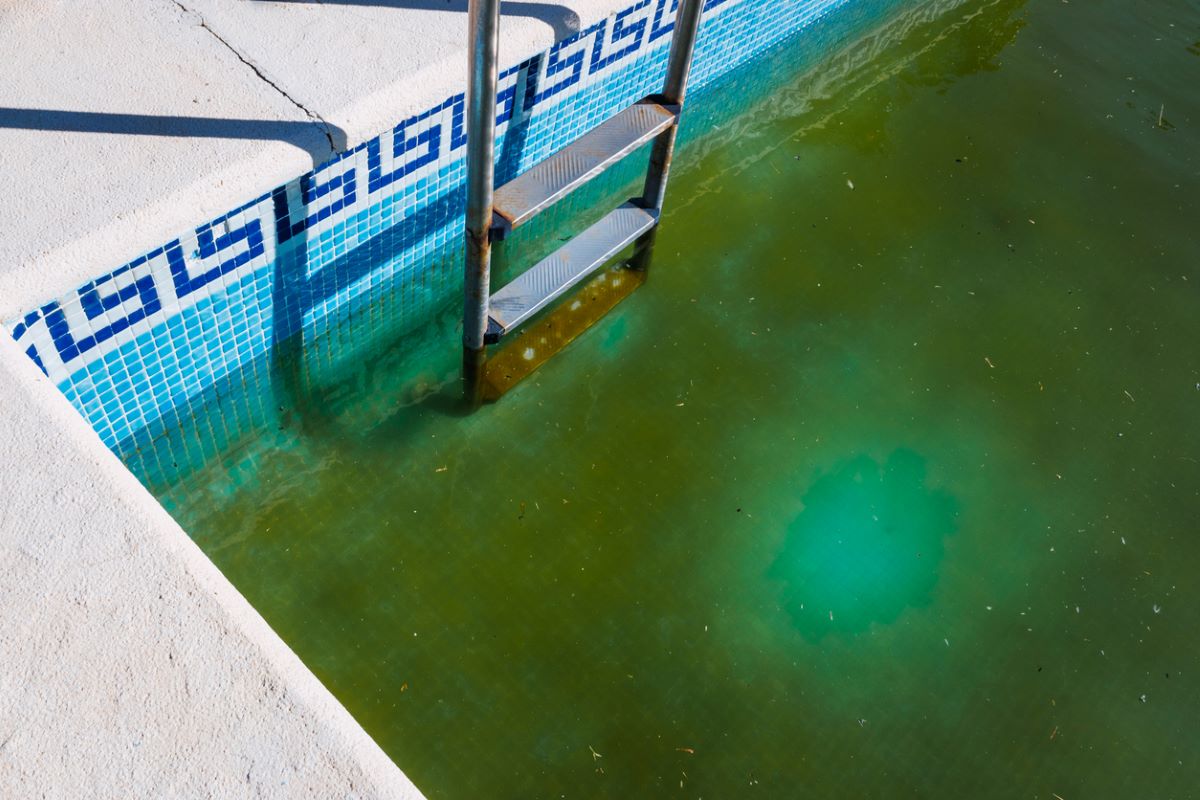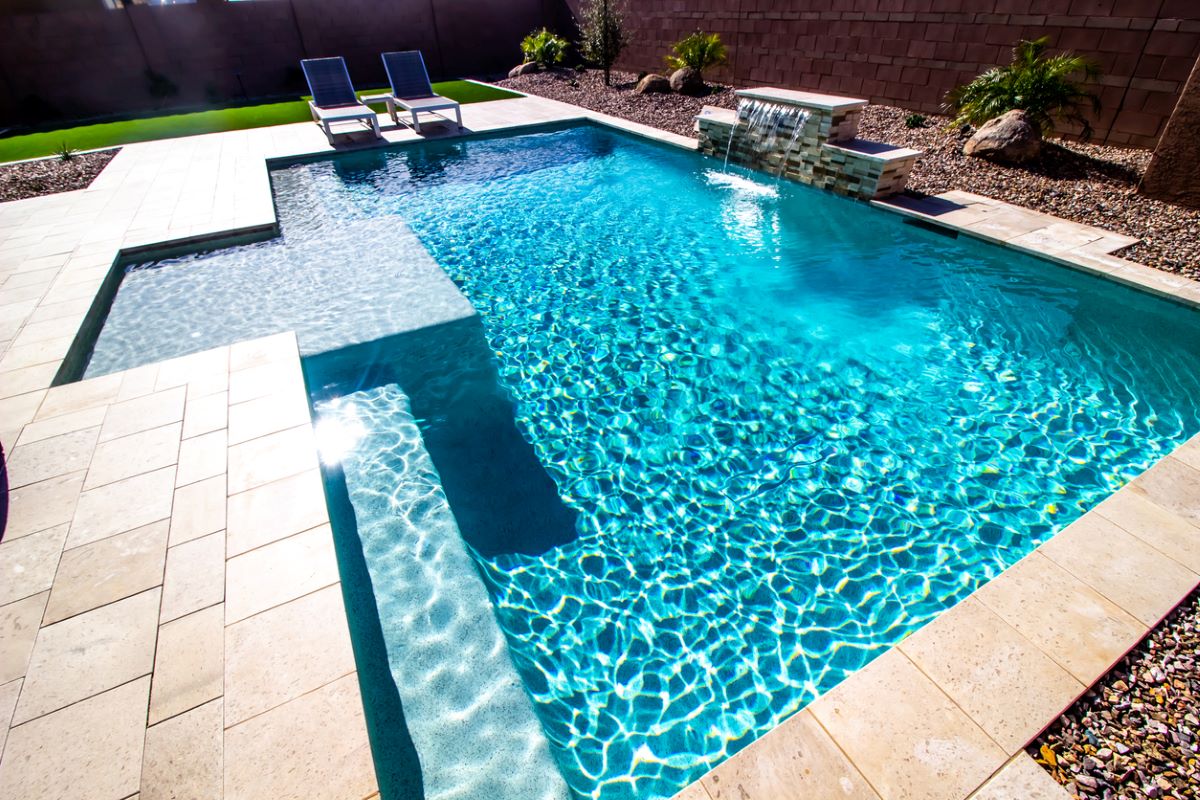

We may earn revenue from the products available on this page and participate in affiliate programs. Learn More ›
Q: I just moved into a new home with a pool in the backyard. I have never had my own pool and am new to all the necessary maintenance tasks. I’ve heard that you can use baking soda for your pool, but I don’t know exactly how it helps. What does baking soda do for a pool? Does baking soda raise pH?
A: Buying a home with a pool can be exciting, but it’s also a big undertaking—one of the things some people fail to consider before putting in a pool. You are right in thinking that baking soda (sodium bicarbonate) can be helpful with pool maintenance; it is a versatile product that can help with many home-care related tasks.
So, what does baking soda do for a pool? Baking soda can actually come in handy for a number of pool maintenance tasks. Read on to learn more about what baking soda can do for pool water, how to add baking soda to a pool, and whether it is the product you’ll need to help maintain your backyard pool.
RELATED: How Much Does It Cost to Build a Pool?
What Does Baking Soda Do for a Pool?
If you’re at all familiar with basic swimming pool chemistry, then you may already know that the water’s pH level should be between 7.4 and 7.6, and definitely not outside of the 7.2 to 7.8 range. If the pH drops too low, it can irritate the eyes of swimmers or cause their skin to itch.
Sodium bicarbonate for pools can help to raise the pH when it drops too low. If you’re wondering how much baking soda it takes to raise pH in a pool, the amount you’ll need can vary based on the size of your pool and the exact pH reading.
In addition to helping to raise the pH of a pool, baking soda can be the answer to the question of how to raise alkalinity in pool water. It is naturally alkaline, so when you pour baking soda in the pool, it will raise the alkalinity, along with the pH.

1. Baking soda improves clarity and softness of pool water.
There are a number of potential causes of cloudy pool water, including problems with the pump or filter, chemical imbalances, hard water or outside environmental factors. To determine whether baking soda may be able to help you address cloudy water issues, test the pH and alkalinity levels.
The pH should fall between 7.2 and 7.8, and the alkalinity level should be between 80 and 120 ppm (parts per million). If the readings for both pH and alkalinity are low, then add baking soda to your pool. Rebalancing the pH and alkalinity can help to clear up the cloudy water.
2. It reduces corrosion on pool parts and equipment.
When either pH or alkalinity are too low, the water can be corrosive to ladders, pipes, and other metallic components of the pool. Lower pH and alkalinity levels can also cause the pool tiles or liner to pit. If you are noticing corrosion or pitting—or want to prevent it from happening in the first place—test the pH and alkalinity levels in your inground or above-ground pool.
If the pH is below 7.2 and the alkalinity is below 110 ppm, add baking soda to the water. It will work as a pH and alkalinity increaser to bring the levels closer to where they need to be to avoid corrosion.
RELATED: 11 Ways to Make a Small Pool Work in Your Backyard
3. Baking soda minimizes scale and algae buildup in a swimming pool.
Algae and scale buildup can cause the pool walls to feel slimy and the floor to feel slippery. They also can give the water an unattractive green tint. Begin by killing the algae with an algicide. Then, superchlorinate—or shock—the water and allow it to circulate for up to 10 hours to clear the pool.
Once the water has cleared, test the pH and alkalinity levels of the water. Add enough sodium bicarbonate pH adjuster to raise these levels to the ideal range (between 7.2 and 7.8 for pH and at least 100 ppm for alkalinity). If needed, you can also sprinkle a little baking soda on slimy tiles and use a scrub brush to remove any stubborn algae.

How to Use Baking Soda in a Pool
Using baking soda in a pool can be an important part of your pool maintenance routine. The step-by-step directions below can help you learn how to use this important pool maintenance product.
- Test to determine the pH and alkalinity levels of the water. Baking soda can be used if the pH is lower than 7.2 and the alkalinity if below 100 ppm (or especially if it is below 80 ppm).
- Determine the appropriate amount of baking soda to add to the water. How much baking soda to add to a pool can vary. A total of 1½ pounds of baking soda typically increases the alkalinity of a pool holding 10,000 gallons of water by 10 ppm. You’ll need to take into account the size of your pool and the current alkalinity reading to determine how much to add. Start with less than you think you need, since adding more will be easier than raising the pH too much and needing to add an acid to lower it again.
- Sprinkle the appropriate amount of baking soda over a large area. Do not simply dump it all in one section, since it may clump. You should also avoid sprinkling the baking soda on a day with a lot of wind; the wind could blow it away before it makes it into the water.
- Allow the baking soda to circulate in the pool for at least 6 hours. Be sure to turn on the pool’s pump to help it circulate more thoroughly.
- Test the pH and alkalinity levels again. Repeat the steps above if levels are still too low.
RELATED: Solved! Does Baking Soda Really Deodorize the Fridge?
Alternatives to Baking Soda for Pool Maintenance
Baking soda can be very handy for pool maintenance, but it is not the only option for how to increase alkalinity in a pool or raise the pH level.
Soda ash, or sodium carbonate, also works to increase alkalinity and raise pH in a pool. However, soda ash doesn’t impact the alkalinity as much as baking soda does. It can be a better alternative if your alkalinity parts per million is already at the right level, and you just need to raise the pH.
Having both soda ash and baking soda on hand is a good idea. If just the pH needs to be raised, add the soda ash. If the pH and alkalinity are too low, opt for the baking soda.
